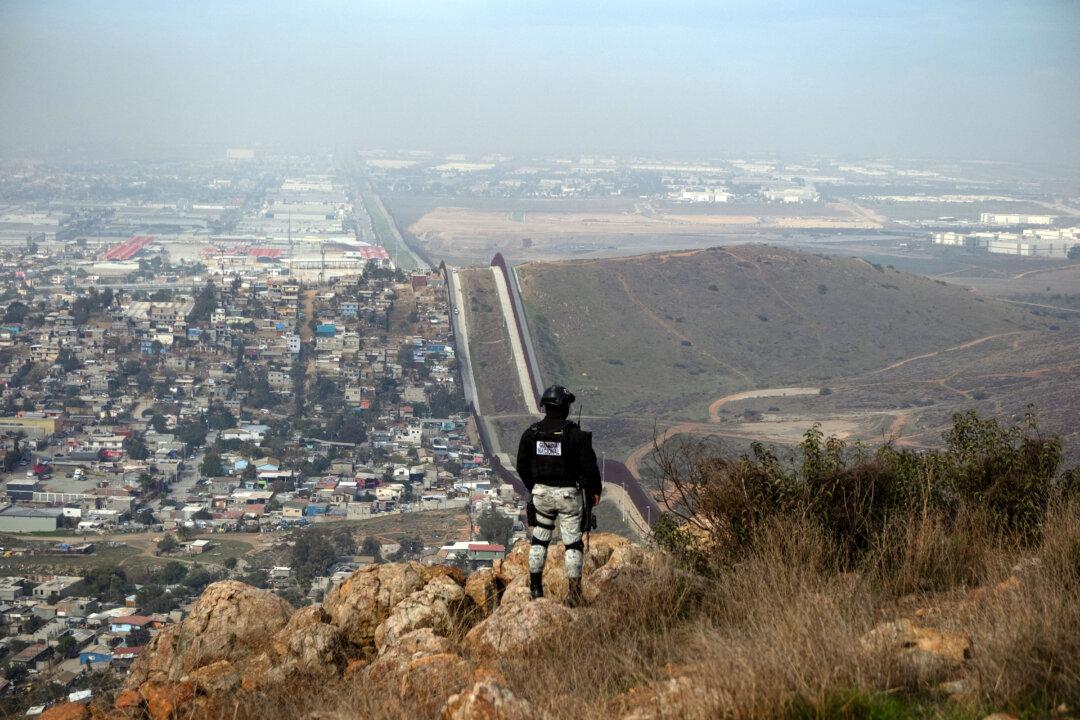Government policies are pushing ever more Americans onto the U.S. electric grid even as the climate-change experiment makes the grid increasingly unstable.
At the federal level, the electrification effort has included heavy subsidies for electric vehicles (EVs) and charging stations, even a contemplated ban on gas stoves. On top of government efforts comes the environmental, social, and governance (ESG) movement, which has succeeded in arm-twisting corporations and public utilities into compliance with its net-zero emissions agenda.
All of this makes Americans more dependent on the electric grid at a time when utilities are accelerating the closure of coal and gas-fired plants, leaving the grid increasingly reliant on intermittent wind and solar power. This has sparked warnings from utility infrastructure experts that America’s dash toward renewables could be driving our electric grid toward instability.
“Running while we’re tying our shoes is the analogy I would give,” John Moura, director of reliability assessment at the North American Electricity Reliability Corp. (NERC), told The Epoch Times. The NERC is charged with regulating electric utilities to ensure that they can deliver electricity whenever it is needed.
“The projected shortfall continues an accelerating trend ... as older coal, nuclear, and natural gas generation exit the system faster than replacement resources are connecting,” the LTRA states. In addition to the high-risk areas, areas of “elevated risk” included New England and the entire western United States outside of California.

A report by industry experts Paul Bonifas and Tim Considine, titled “The Limits to Green Energy,” puts it more bluntly:
“It is unknown what level of VRE [variable renewable energy] can be added to the grid before it breaks or becomes unaffordable. However, it is all but certain that at some unknown point, the grid will become unreliable and costs will skyrocket. And yet, more VREs are built every year.
“Is a 100 percent renewable grid technology possible, is it reliable, and is it economical? No, no, and no.”
The report states that the incessant shutting down of reliable power sources—gas, coal, and nuclear—will be destabilizing, and the costs to conform the grid to weather-dependent renewable power generation are “significant and unknown.”
Many of the issues stem from the physics of electricity and the architecture of our power grid, which Moura calls “the largest machine in the world.” America’s electric grid features hundreds of power plants situated throughout the United States connected to transformers that convert that power so it can be transmitted throughout the about 700,000-mile network of high-voltage transmission lines. The electricity then makes its way to neighborhood transformers that progressively step down the voltage so that it can be safely used in homes.
Because the electricity on the grid can’t sit idle or be stored for long periods, it must be consumed as it is created. Conversely, at the moment that people turn on the heat, charge a car, or flip a light switch in their homes, that electricity must be generated at the moment at some point along the grid.
“Electricity consumption and generation must always be balanced,” Bonifas and Considine write. “If it isn’t, the power grid could collapse. Thankfully, the immense size and interconnectedness of electricity grids make the balance issue easier to handle; billions of electrical loads across the country are constantly being added and removed, averaging out at any given moment.”
Supply Increasingly Depends on Weather
The problem comes when weather-dependent sources such as wind and solar are introduced into the grid at increasing rates. The problem is not just that VREs only generate power when the weather cooperates, but also that even when the weather is cooperating, the timing is off. For example, peak solar generation typically occurs about five hours before peak demand during the daytime, and peak wind generation often comes at night when demand is lower. And there are also seasonal mismatches between supply and demand for renewables.“In the winter, one of the particular challenges with solar is that peak electricity demand is happening usually when the sun is down, early morning, or early evening,” Moura said. “You can add as much solar as you want, but it wouldn’t be there to contribute to that time period and serving demand.”
Because of the unpredictability of VREs, fossil fuel and nuclear power stations must be on hand to act as a “smoothing” system that can be ramped up or down at will, and rebalance intermittent supply with demand. When renewables made up a small subset of power generation, the grid was able to more effectively manage their variability. But the United States is now moving in the direction of having renewables be the dominant source of its electricity without having assessed the cost of necessary grid upgrades, or even at what point this transition pushes the grid to its breaking point.
Various storage options have been proposed to replace the smoothing function of fossil fuels and nuclear generators, but whether they can be viable at scale and cost-effective, and when, remains an unanswered question.
Electricity Dependence Rapidly Increasing
While the grid struggles with intermittent supply, demand is rising steadily. NERC’s report states: “In many parts of North America, peak electricity demand is increasing, and forecasting demand and its response to extreme temperatures and abnormal weather is increasingly uncertain. ... Specifically, electrification of residential heating requires the system to serve high demand on especially cold days.”The grid must be set up to handle peak demand, which is difficult to predict in terms of demand levels and timing. For example, despite a fairly mild winter, Tennessee, one of the more robust segments of the grid, experienced rolling blackouts around Christmas when temperatures suddenly dropped below zero Fahrenheit for several days.
“What kind of resources do I have available that can readily be there, that I can constantly be assured will show up on the coldest of cold days?” Moura said. “If I look at my options, they are slowly dwindling. I used to have more, but now I can’t build any oil generators; it really is hard to build gas generators in certain states; no one’s building any more coal.”
“The whole system,” Moura said, “is designed to serve air-conditioning load, summer peak load,” which is typically the maximum demand for electricity in a given year. To put EVs in perspective, he said, “one electric vehicle charger is equivalent to about two-and-a-half normal-sized air conditioners.”
“Today, we don’t have the generating capacity that would be needed to serve any percentage of the total EV cars in a given area,” Moura said. “No area has the capacity to handle it today. We have a lot of things that are electrifying as well—manufacturing processes, crypto mining, population growth.”
The LTRA recommends holding off on shutting down coal, gas, and nuclear plants until more is known about whether the grid can handle the variability.
“We’ve raised the flag, saying we need to secure more firm resources, that the states need to act, and it’s really the states that have this authority to ensure that generation doesn’t prematurely retire,” Moura said. “Part of the strategy around managing the pace [of transition] is not prematurely retiring these before we’ve got all our ducks in a row and we’ve got a reliable system that we can count on.”





